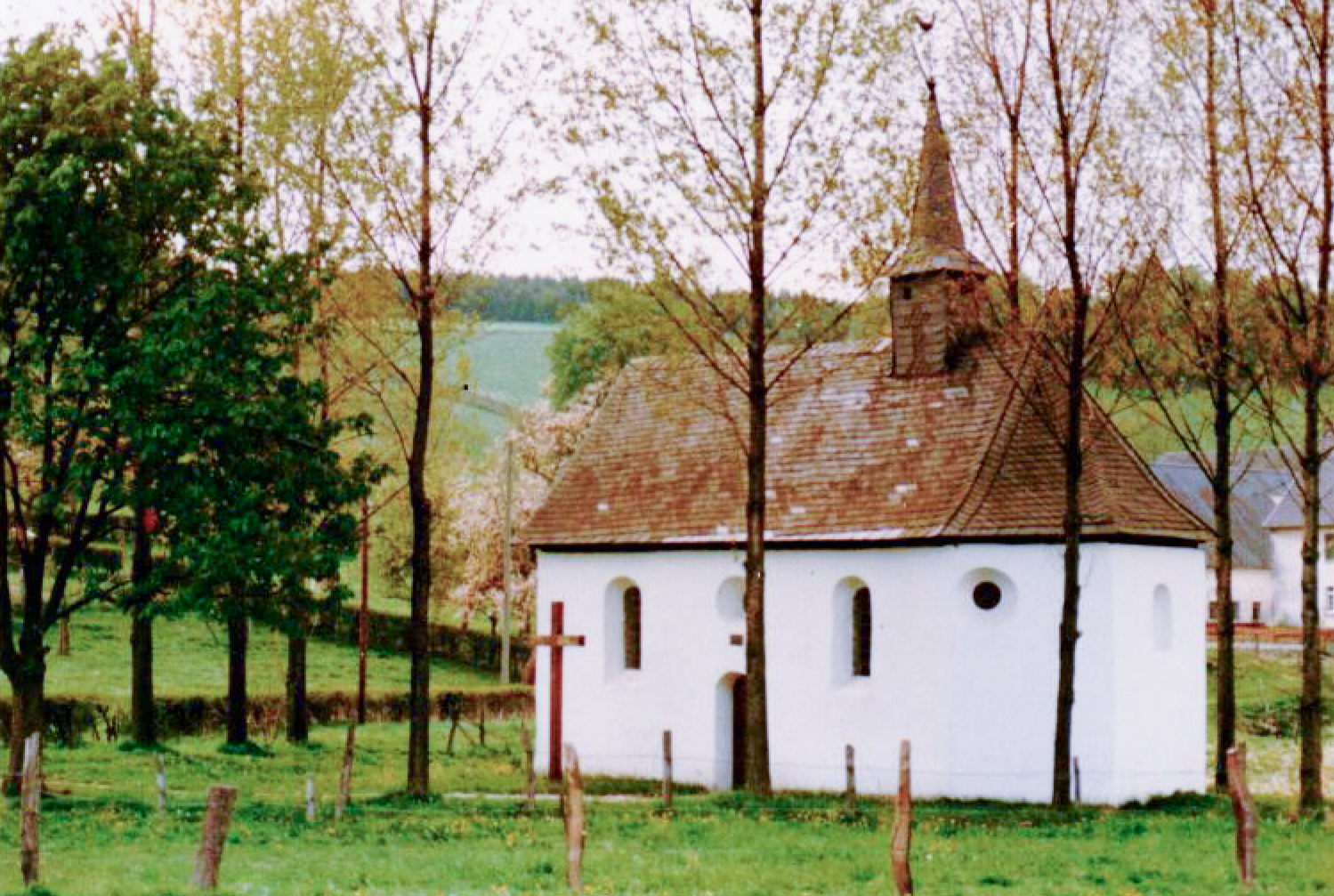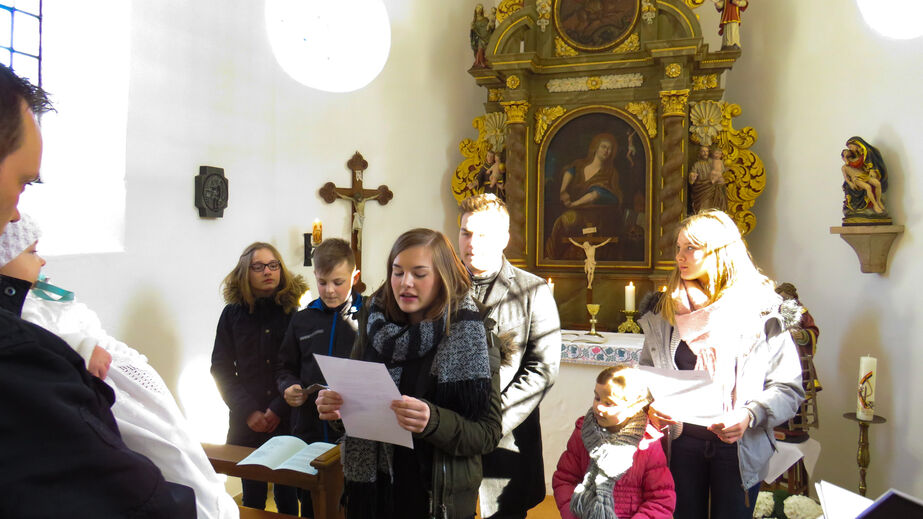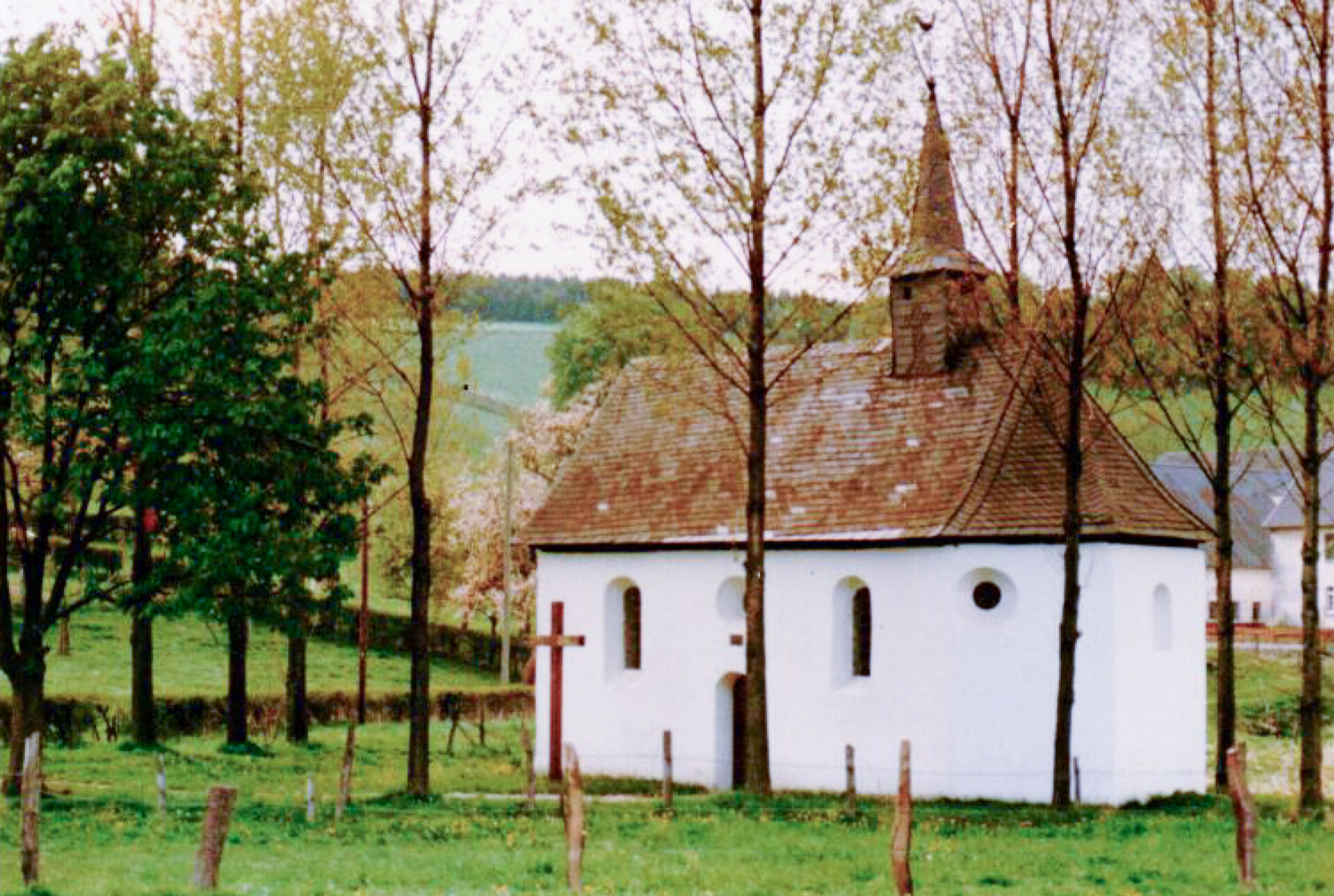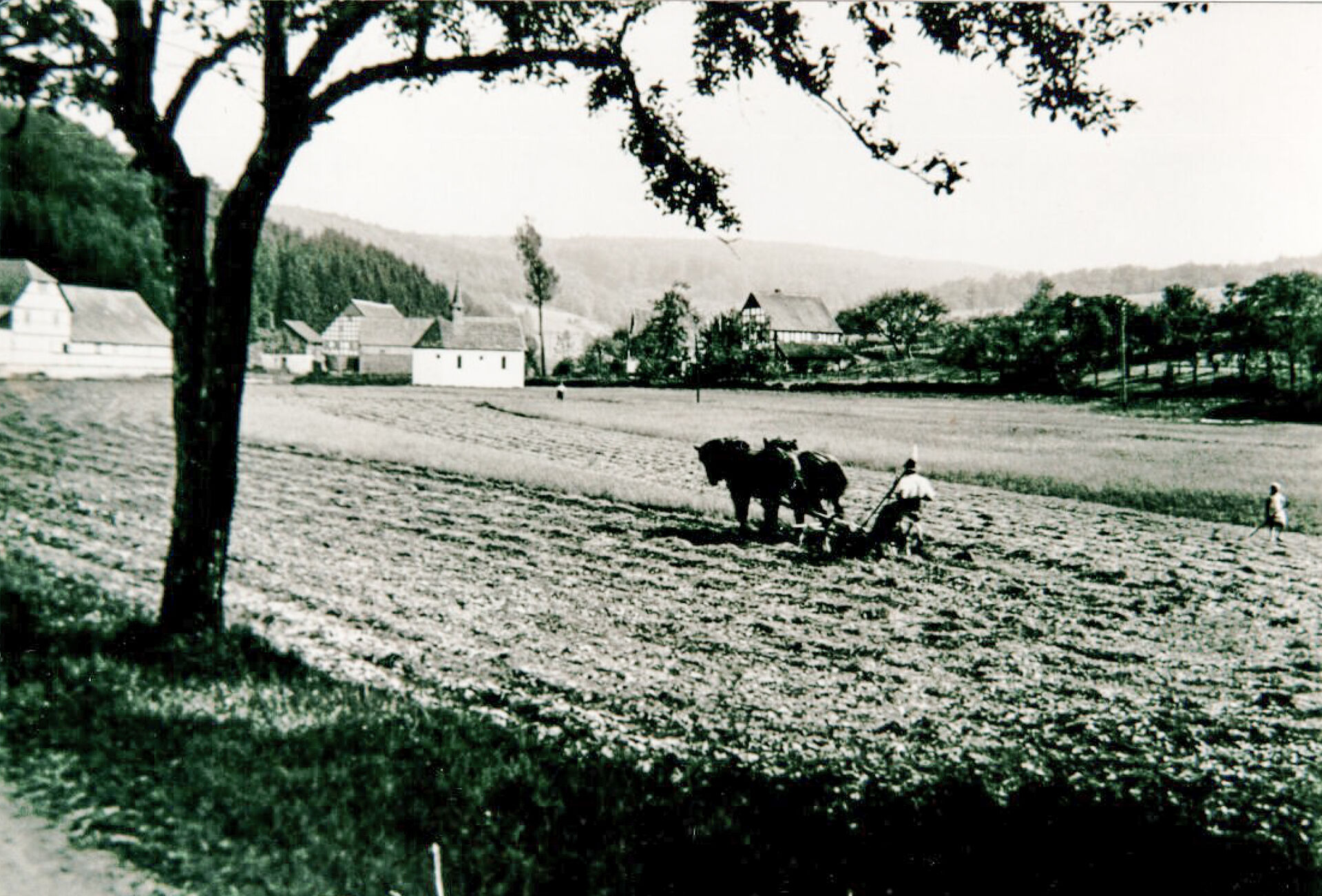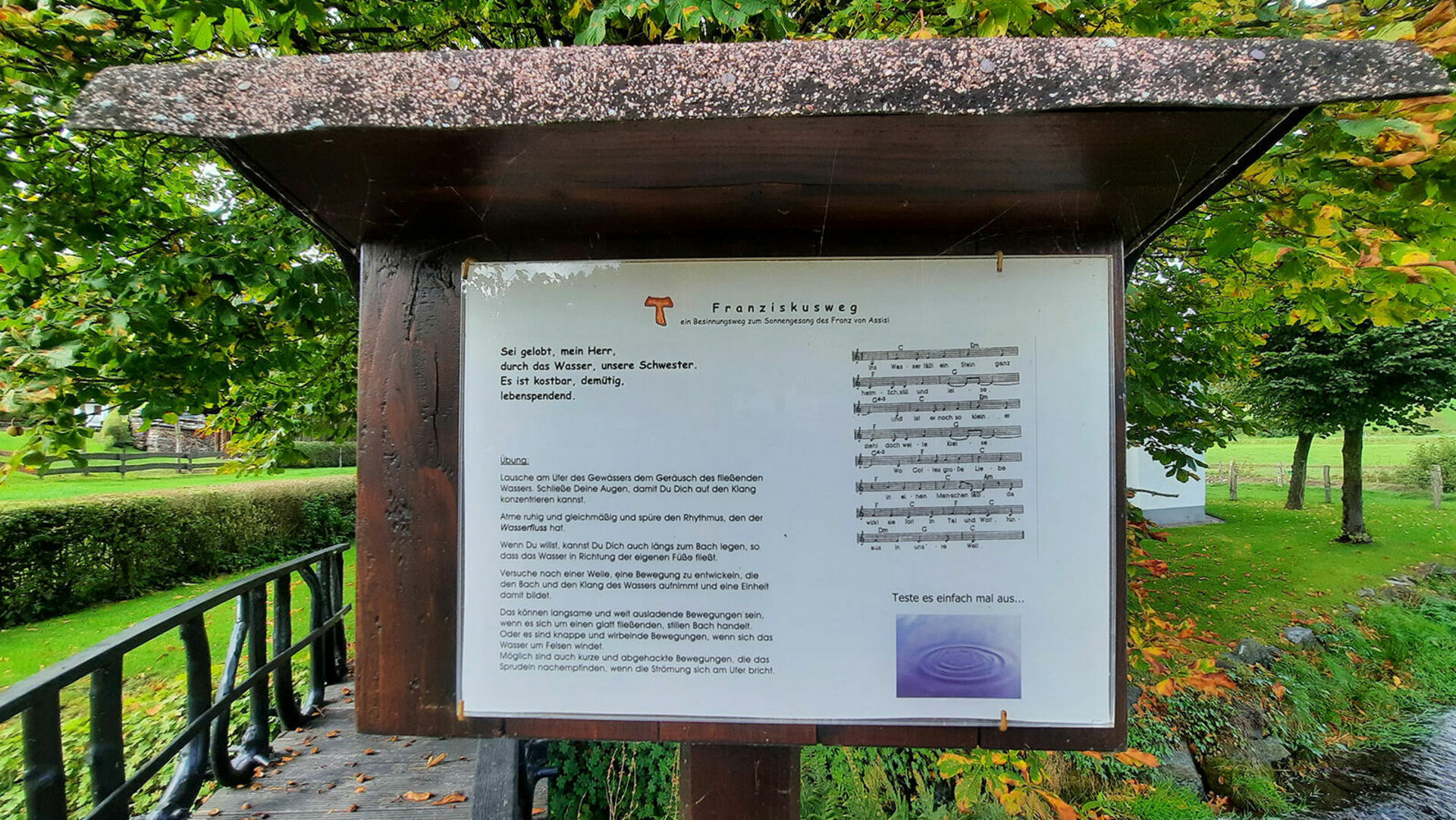St. Vincent
Court chapel in Niedermarpe
Estate owner Hermann Pape built the St. Vincent Chapel in 1680 to honor the deacon and martyr Vincent of Saragossa. The saint is considered the patron saint of wine merchants, tailors and hat makers - his day of remembrance is January 22. In the chapel, you can see statues that once stood on the house altar or in the prayer room of the von Marpes family of knights. The von Marpes had already died out by 1530. Today, the farm belongs to the Dünnebacke-Strugholtz family, who maintain and care for the chapel. The building has been a registered monument of the municipality since 1983 Eslohe. The chapel includes the seven footfalls on the way to the cross in the direction of Isingheim.
A court chapel was rarely the nucleus of a priory. St. Vincent is an exception. Primissariats were Catholic priests' posts financed by foundations. They were used to hold a Holy Mass for everyone before work began. One such position was endowed by priest Georg Pape, one of the sons of the chapel builder. He was a canon in Wetzlar and bequeathed 1504 thalers in his will in 1710 to establish a pastoral care station in the court chapel "for eternity". In this way, he wanted to improve pastoral care at Marpetal and secure his own peace of mind and that of his relatives. However, things did not quite go according to the testator's wishes: his eldest brother Hermann Diedrich, the court clerk appointed by the Cologne archbishopric in Eslohepresented the first of twelve primissaries in August 1710. But it was not until 170 years later that the Kückelheim parish received the donation from the founder.
The St. Vincent Chapel was built in the High Baroque period in 1680. This is reflected in the simple hall, which is only open to one side. There are round windows above the side entrance and at the apse. The compact baroque altar was consecrated in 1647. It probably comes from the workshop of the famous Baroque sculptor Johann Sasse. The figures of St. Vincent at the top right and St. John on the wall opposite the entrance door are also attributed to him. The triumphal arch of the altar is single-gated, with two spiral columns supporting an architrave with a pierced round arch. The main image of the altar shows Mary Magdalene weeping for Jesus. St. George is depicted on the circular image of the attic. Above it is a round arch with a winged cherub. The sides of the altar are decorated in gold with acanthus leaves and fruit. Since 1989, a new slate Stations of the Cross by Arnhold Siepe from Holthausen.
Until the end of the 1990s, mass was celebrated in the chapel every month. The time of the premissaries was long gone. Every year in August, there was a procession on the Assumption of Mary from Kückelheim to Niedermarpe. The people of Kückelheim had once vowed to do this when they had received support from the court to expand their church. This tradition was eventually abandoned due to a lack of pastors and coronavirus. The last procession took place in 2018. Since 2022, lay people have held regular rosary prayers and a May devotion.
For many decades, farm resident Luzie Dünnebacke took care of the maintenance and decoration of the place of worship "with heart and soul and for God's glory", supported by her husband and heir to the farm, Wilhelm Dünnebacke. Today, the chapel is looked after by daughter Verena Dünnebacke and her husband Peter Strugholtz. They divided the house into three apartments in 2016 and live in Anröchte-Effeln themselves.
Vertelleken
Chatting out of the sewing box...
Martha Feldmann, who now lives opposite the chapel, grew up in the farmhouse together with her brother and former owner Wilhelm Dünnebacke. According to her memories, there were still "plenty of holy figures" in an oak chest in the hallway of the house when she got married in 1956. She was allowed to choose one of them and take it with her as a "trousseau". Today, the figurines have all disappeared and unfortunately no one can remember what happened to them or where they came from...
Franziskusweg
Ein Besinnungs- und Wanderweg durch die Orte des Marpetals zum Sonnengesang des heiligen Franz von Assisi.
Bilder
Beschreibung
In Anlehnung an den Sonnengesang des hl. Franz von Assisi preist der Franziskusweg durch das Marpetal bei Eslohe-Kückelheim die Schönheit der Schöpfung. Nach einer Einführungsstation greifen 8 weitere Stationen jeweils eine Strophe des Gesangs des Schutzpatrons der Tiere auf und regen zum Nachdenken, Mitmachen und Diskutieren an. Lassen Sie sich erden von der Anmutung und den Aufgaben von Bruder Mond, Schwester Sonne und ihren Geschwistern. Und erleben Sie Mutter Natur ausgesprochen inspirierend.
Karte
Am Startort in Kückelheim weist eine Schiefertafel mit einem Bildnis des heiligen Franzikus den Beginn des Besinnungsweges aus. Dem weißen Taukreuz (weißes T auf schwarzem Grund) folgen Sie einem 8 km langen Weg entlang, über die Hanglagen des Marpetals durch die Orte Niedermarpe und Dörmecke. Unterwegs stellen Ihnen dabei 8 Stationen den Sonnengesang des heiligen Franzikus vor.
Wir empfehlen festes Schuhwerk, sowie ausreichend Verpflegung und Getränke mitzubringen.
Im Hochsauerlandkreis ist ein Rettungspunktsystem installiert. Rettungspunkte finden Sie unter anderem auf den Informationstafeln der Knotenpunkte und Wanderbeschilderung.
Parkmöglichkeiten befinden sich an der Kirche in Kückelheim.
Kückelheim erreichen Sie mit den Buslinien 445 und 446. Für den Einstieg in die Tour nutzen Sie am Besten die Haltestelle "Wulf".
Zur Fahrplanauskunft: www.rlg-online.de
Mit derSauerlandCard fahren Sie in der Region kostenlos mit Bus und Bahn.
Wanderkarte Ferienregion Eslohe, Maßstab: 1 : 25.000
Eigenschaften:
- aussichtsreich
- Rundtour
- kulturell / historisch


